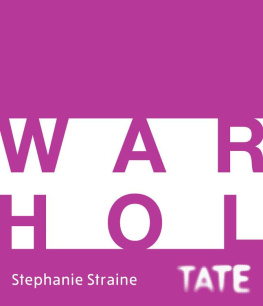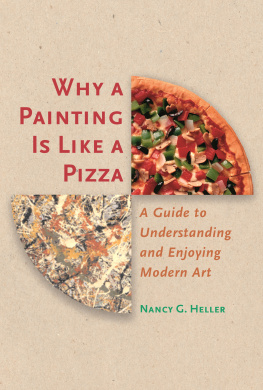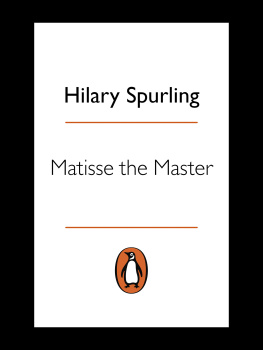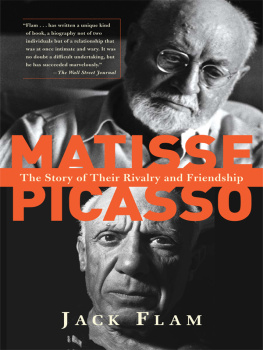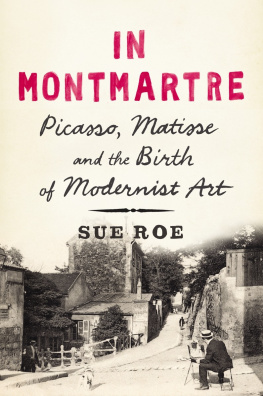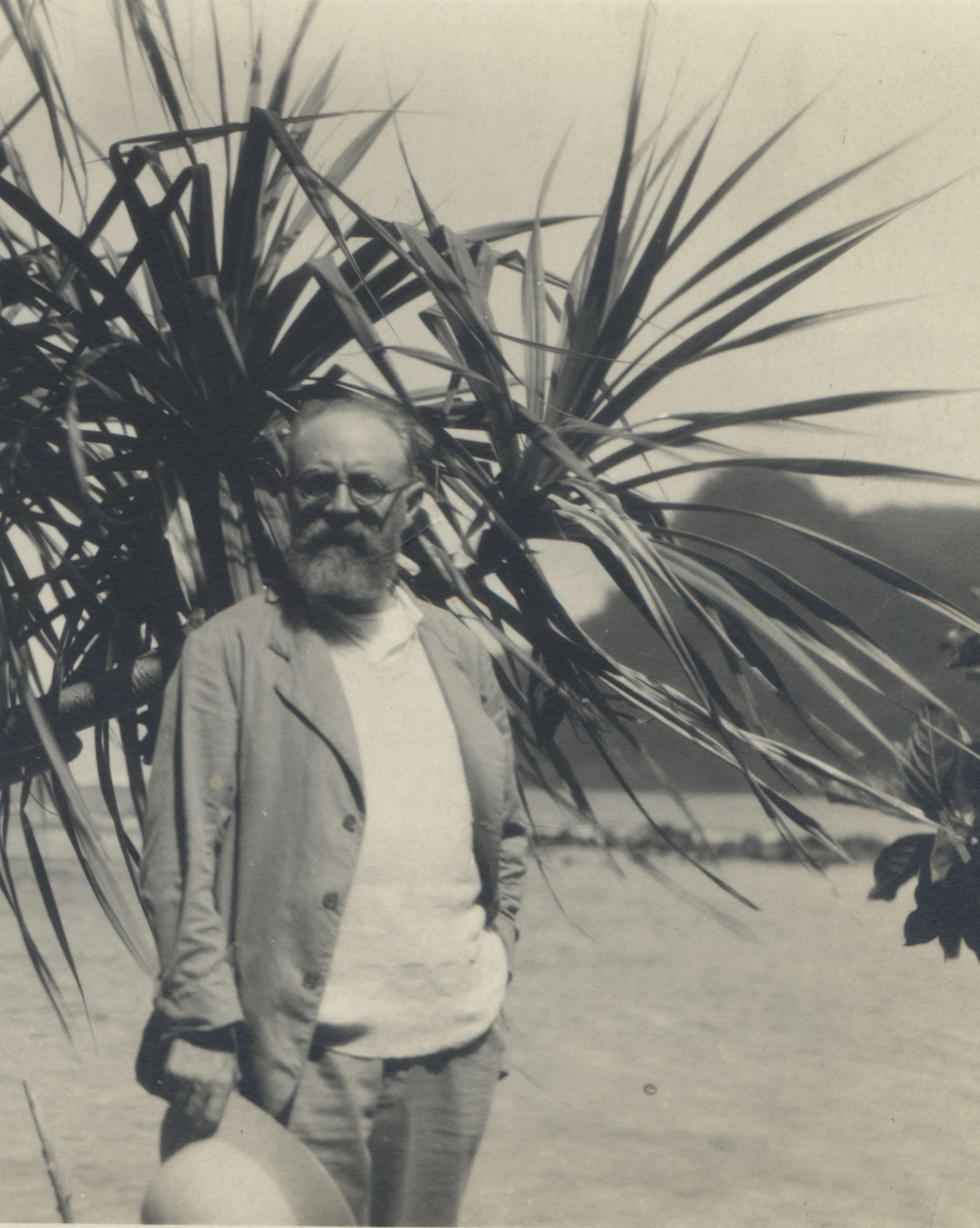A box of colours
What I am after, above all, is expression.
Henri-mile-Benot Matisse was born on 31 December 1869 in the textile town of Le Cateau-Cambrsis, in the Picardy region of France. His father, mile Hippolyte Henri Matisse, came from a family of weavers, and his mother, Anna Hlose Grard, was the daughter of a tanner. Henri was the eldest of three brothers, one of whom died at the age of two. Soon after Henri was born, the family moved to Bohain-en-Vermandois, a small town twelve miles from his birthplace. There the family opened a store from which Matisses father mainly sold grain and seeds, but from which his mother also sold house paint and mixing pigments, and advised clients on colours and decorative styles. Throughout childhood, Matisse suffered frequent bouts of intestinal trouble which left him weak and incapacitated for weeks on end, and these, it is believed, may have been brought on by his anxiety over the prospect of having to take over the family business. He later reflected,I was a child with my head in the clouds.
From 1882 to 1887, after attending the Collge de Saint-Quentin, Matisse studied classics at the Lyce Henri Martin in the same town, and in 1887 was sent to Paris to study law. He passed his law examinations in August 1888 and returned to Bohain, and in 1889 started to work as a clerk in a law office in Saint-Quentin. Then came a pivotal moment; when an acute attack of appendicitis forced him to convalesce at his parents house for several months, his mother gave him a paintbox to relieve his boredom. Having spent his childhood on the great Flanders plain, in a society offering little imaginative outlet beyond its fairs, the occasional travelling circus and games of knights-on-horseback, it was only now that his interest in painting began and grew. Matisse himself identified this as the period in which his dedication to art began.
Before, I had no interest in anything. I felt a great indifference to everything they tried to make me do. From the moment I held the box of colours in my hand, I knew this was my life. Like an animal that plunges headlong towards what it loves, I dived in, to the understandable despair of my father It was a tremendous attraction, a sort of Paradise Found in which I was completely free, alone, at peace.
He began by buying an instructional handbook called CompleteManual of Painting in Oils by Frdric Goupil, and in the summer of 1890 produced his first painting, Still Lifewith Books (Muse Matisse, Nice), later renamed My First Painting. After his recovery, Matisse started to work for Matre Derieux, a lawyer in Saint-Quentin, but continued to pursue his new-found interest in painting and drawing. He enrolled in a free art school where, by attending classes early in the morning, he learned how to draw and paint.
By 1891 Matisse had become dissatisfied with his life and work at Saint-Quentin and decided to move to Paris. Despite disapproving of his ambitions to become a painter, Matisses father supported him with 100 francs a month, and paid for his tuition fees at the Acadmie Julian, a private school, where he attended the classes of the highly respected William-Adolphe Bouguereau. Quickly, though, Matisse found Bouguereaus teaching too conservative:
Dont rub out the charcoal with your fingers that denotes a careless man; [] youll have to understand perspective but first you must learn how to hold a crayon
Torn between his respect for academic technique and his desire to break new ground, the young Matisse failed the entrance examination to the cole des Beaux-Arts in February 1892. Discouraged, he left Bouguereaus classes, but the works of Goya and Chardin at the Muse des Beaux-Arts in Lille inspired him to continue pursuing his artistic ambitions. He enrolled at the cole des Arts Dcoratifs for a teaching diploma and began to attend a course in perspective and geometry, but it was an encounter with symbolist painter Gustave Moreau that provided Matisse with a direction and influence that was previously missing. He started to attend Moreaus classes unofficially in 1892, where he was taught to look inwards Moreau also encouraged his pupils to visit the Louvre and imitate artists like Chardin, Watteau, Fragonard, Poussin and Jan Davidsz. de Heem (Still Life after Jan Davidsz. de Heems La Desserte 1893, Muse Matisse, Nice), as well as to practise sketching in the streets. Matisse chose Chardin as his favourite and he began to explore variation of tone as a means to bring out greater qualities of light amid softer hues.
In the summer of 1894 Matisse moved to 19 Quai St-Michel, the first studio he was to live in on his own and to which he would return for years to come. Eventually, Matisse was accepted at the Beaux-Arts in 1895 and continued to attend Moreaus classes (The Atelier of Gustave Moreau 18945, Private collection), where he befriended the painter Georges Rouault. His first visit to Brittany, in the summer of 1895, gave rise to an interest in painting outdoors. In 1896, following the exhibition of five paintings at the Salon de la Socit Nationale des Beaux-Arts, and the purchase by the French State of two of his works, Matisse was elected to Associate Membership of the Socit Nationale. In spite of this recognition from the conservative establishment, Matisse turned his attention more and more to modern art, using increasingly impressionistic techniques (Sunset in Corsica 1898, Private collection).
Matisse was now beginning to grow in self-confidence. He sought the company of his fellow artists and developed his interest in impressionism. He often visited the Durand-Ruel gallery, which exhibited works by the impressionists, as well as the new Ambroise Vollard gallery, which showed works by Vincent van Gogh and Paul Czanne. Camille Pissarro, the elderly father of impressionism,
Matisses personal life up to this point had been tumultuous. In 1893 he had begun a relationship with Caroline Joblaud, who gave birth to their daughter, Marguerite, a year later. In early 1897, Matisse signed paternity papers such that Marguerite could legally Matisse recounted of his first experience in the sunnier South, and from this moment on his works began to reflect that same light, using vivid and arbitrary colours. His work of this period, the so-called proto-fauve, owed much to the influence of neo-impressionism and the work of Czanne (Still Life Against the Light 1899, Private collection).
Soon after the death of his former teacher Moreau in April 1898, Matisse left the Beaux-Arts, exhibiting for the last time at the Socit Nationale in 1899. He was still not fully accepted as an avant-garde artist and exhibited only once at the Salon des Indpendants in 1901. Through his frequent visits to the Ambroise Vollard gallery, Matisses admiration for Czanne greatly increased, so much so that he bought Czannes Three Bathers (Le Petit Palais, Paris), which he kept until giving it to the Petit Palais in Paris in 1937:
I have owned this canvas for thirty-seven years and I know it fairly well, I hope, though not entirely; it has sustained me spiritually in the critical moments of my career as an artist; I have drawn from it my faith and my perseverance []
Toward the end of 1899 Matisse began to experience a reversal of fortunes which reached its lowest point between 1902 and 1904, a period famously labelled by his biographer Alfred H. Barr, Jr. the dark years. born in June 1900. Matisse continued to spend some time in Paris, where he attended classes at the Acadmie Carrire, and it was there he established the group of painters that came to be known as the fauves (wild beasts). His works from this period reflect his interest in sculpture and the work of Czanne (



